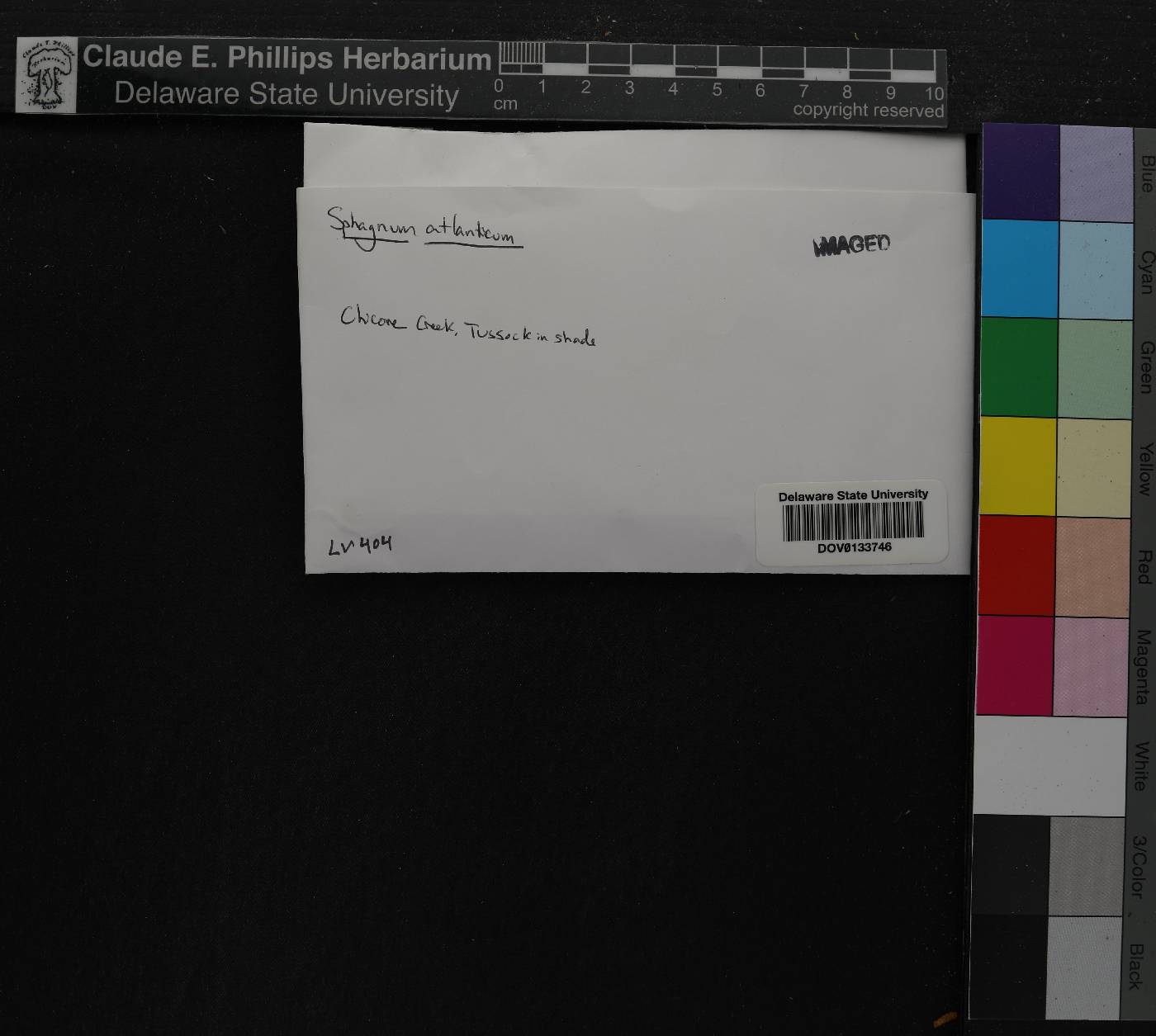Sphagnum atlanticum
|
|
|
|
Family: Sphagnaceae
|
Plants robust and weak-stemmed; green, golden brown to dark brown; capitulum often flat-topped and with a visible terminal bud; flaccid and plumose in submerged forms to more compact in emergent or stranded forms. Stems green to brown; superficial cortex of 1-2 layers of moderately thick-walled and poorly differentiated cells. Stem leaves triangular, large, less than 1.7 mm, mostly appressed to stem, apex weakly apiculate to narrowly obtuse; hyaline cells efibrillose and seldom to often septate at base and sides. Branches unranked, long and tapering, leaves greatly elongate at distal end. Branch fascicles with 2 spreading and 2 pendent branches. Branch stem green, cortex enlarged with conspicuous retort cells. Branch leaves ovate-lanceolate to lanceolate in aquatic forms, ovate to ovate-lanceolate in emergent forms, greater than 2.5 mm, often falcate-secund, especially in submerged forms, weakly undulate and recurved when dry; margin entire, hyaline cells on convex surface with 0-1 pores per cell, concave surface with round wall thinnings in the cell apices and angles; chlorophyllous cells narrowly triangular in transverse section and well-enclosed on the concave surface. Sexual condition dioicous. Sporophytes not seen. Forming loose carpets in pools in weakly minerotrophic fens; low elevations; N.B., Nfld. and Labr. (Nfld.), N.S.; Conn., Del., Maine, Md., Mass., N.H., N.J., N.Y., N.C., Pa., R.I., Vt., Va. Sporophytes of Sphagnum atlanticum are rare. The other large North American Atlantic coastal plain species of sect. Cuspidata, S. torreyanum, is typically more yellow, has a more rounded capitulum, and has straight rather than subsecund branch leaves.
|
|
|
|

